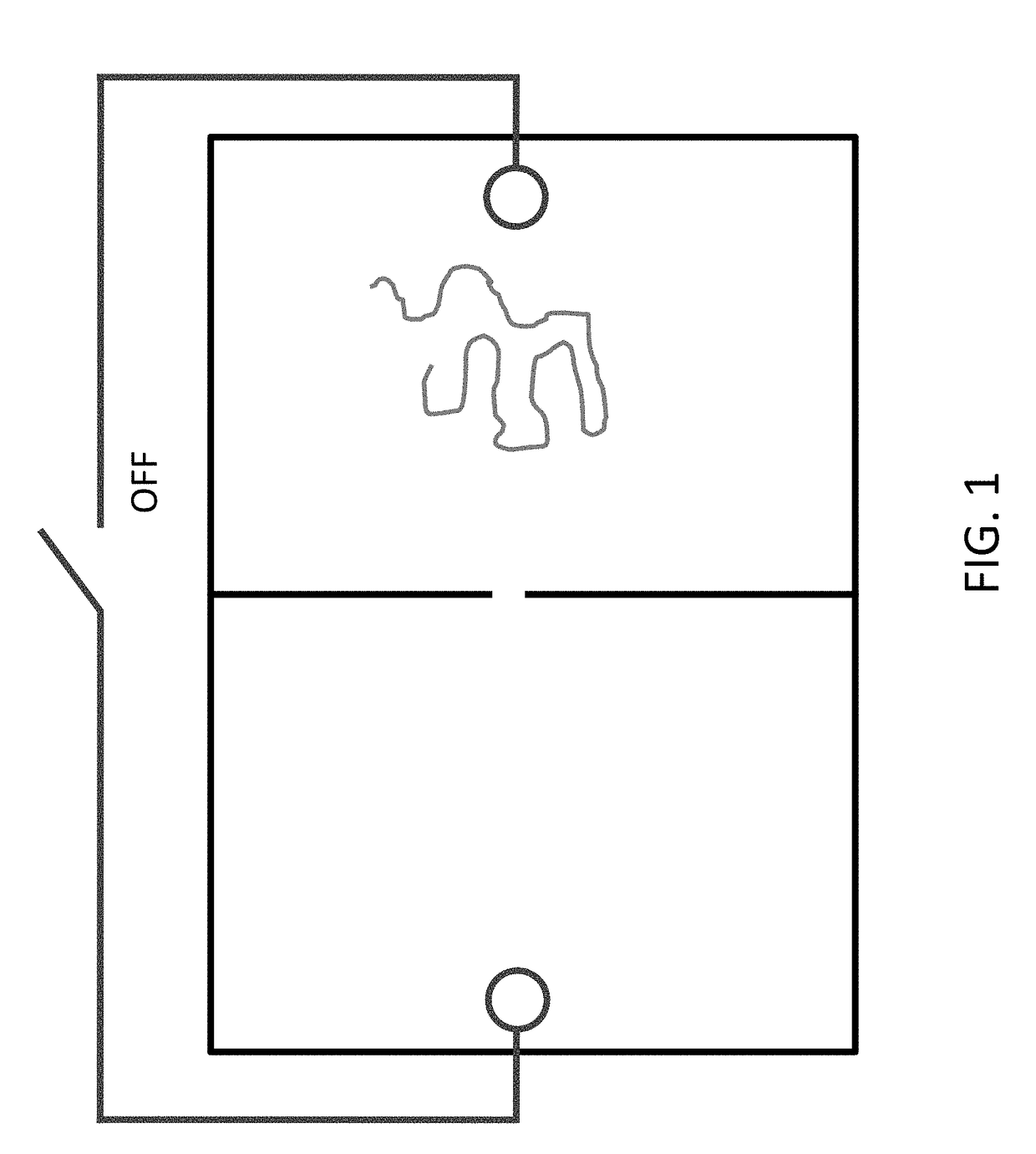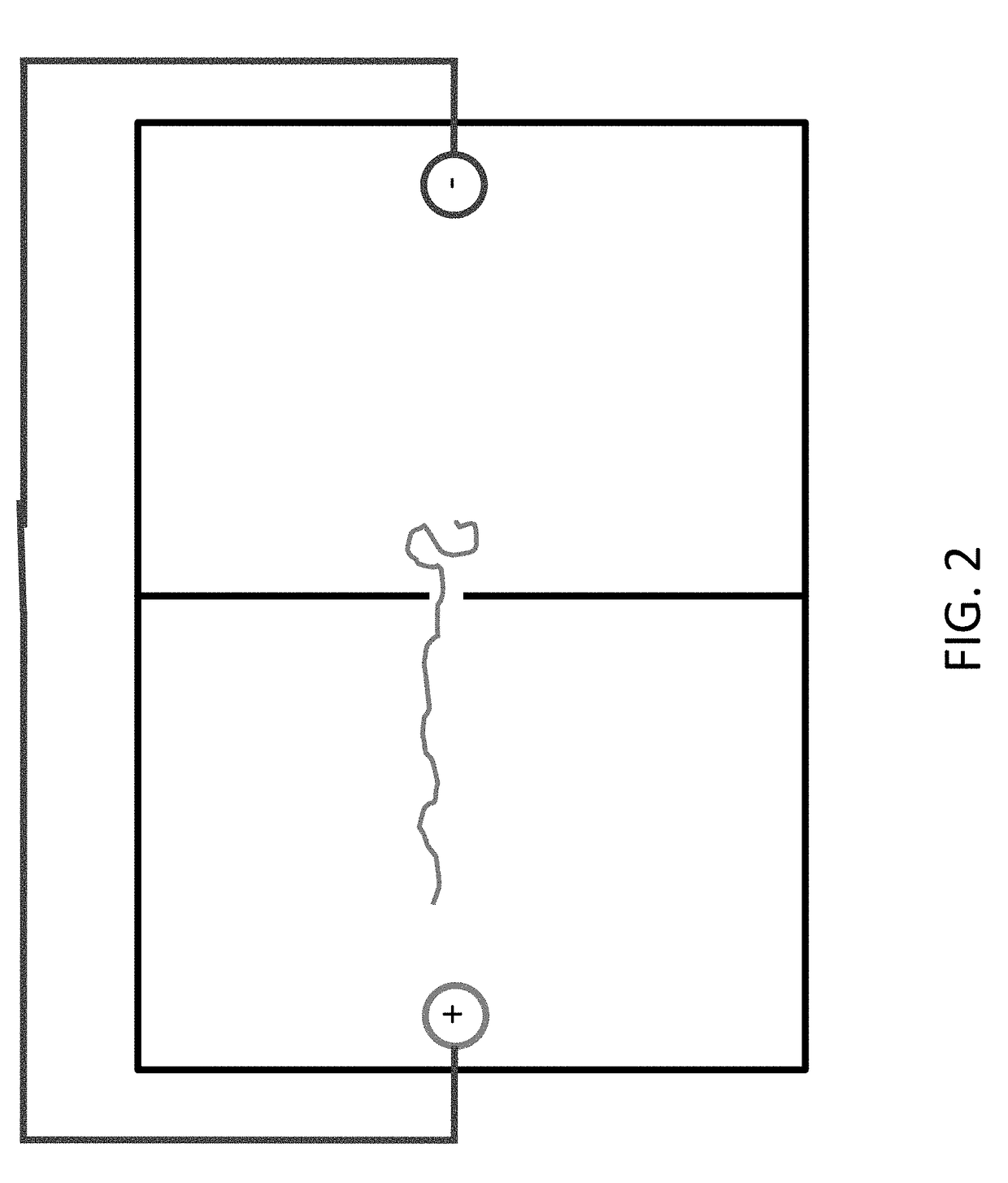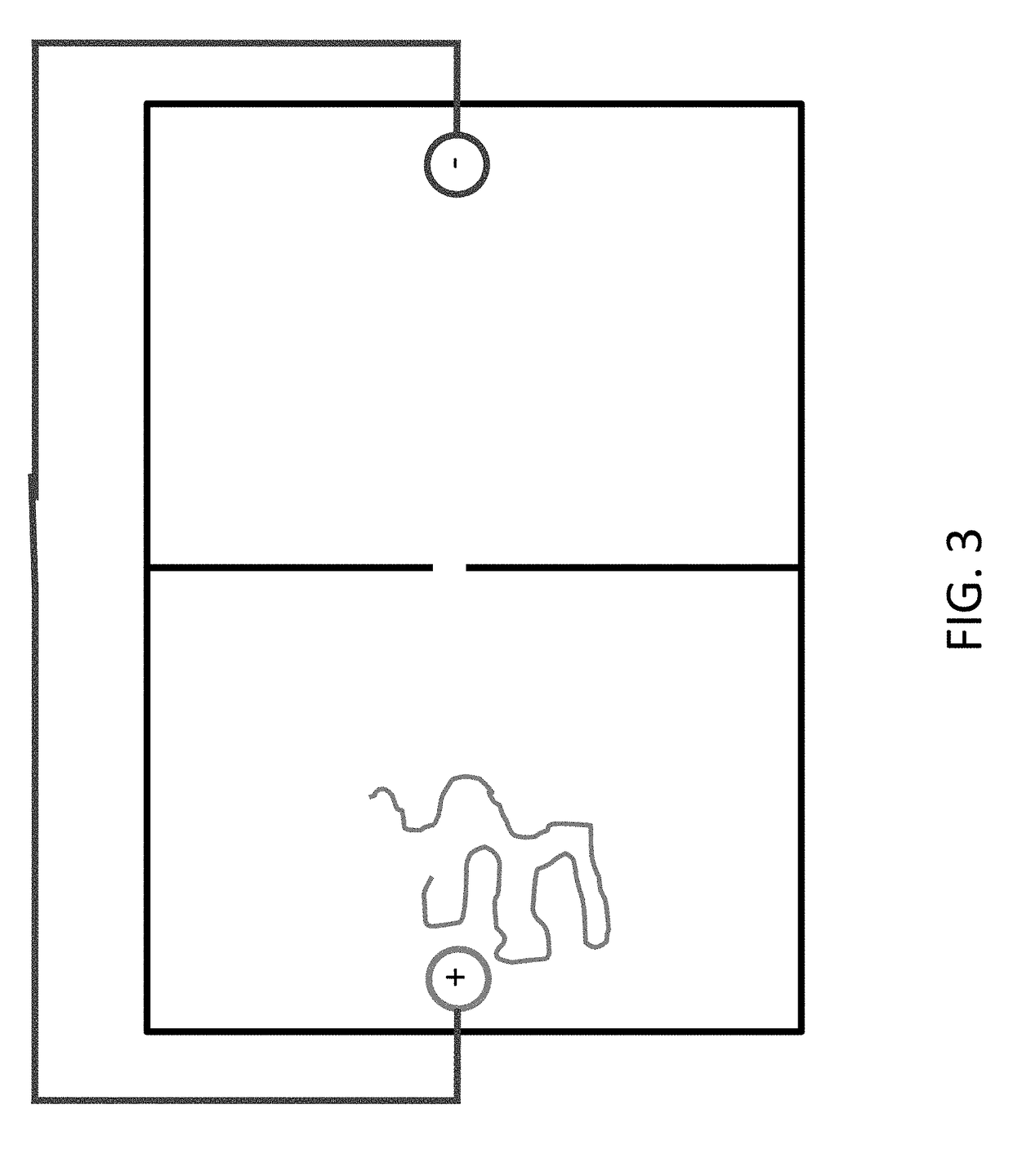Methods, compositions, and devices for information storage
a technology of information storage and composition, applied in nanoinformatics, instruments, biochemical instruments and processes, etc., can solve the problems of no practical approach to implementing this idea, and significant limitations, so as to achieve extremely rapid sequencing and read the sequence through a nanopore. , the effect of speeding up and improving accuracy
- Summary
- Abstract
- Description
- Claims
- Application Information
AI Technical Summary
Benefits of technology
Problems solved by technology
Method used
Image
Examples
example i
Immobilizing One End of DNA Adjacent to Nanopore and Controlled Back and Forth Movement of DNA Via Electrical Current
[0530]Experimental procedures are developed to demonstrate that DNA is moved back and forth between two chambers separated by a nanopore, via an electrical current, under conditions that a relevant protein does not move between chambers.
[0531]A nanochip comprising two chambers is fabricated from silicon nitride. Nanopores of Automated fabrication of 2-nm solid-state nanopores for nucleic acid analysis, Small (2014)10(10):2077-86. The two chambers are referred to as a ‘near’ and ‘far’ chamber, the far chamber being the chamber where 3′ end of DNA is conjugated.
[0532]It is shown that ssDNA (2 nm pore) and ssDNA+dsDNA (4 nm pore) but not protein pass through the nanopore. Passing through the nanopores is detected by electrical current disruption.
[0533]Conjugation of DNA to pore surface: Attach 5′ amino modified DNA to carboxy-coated polystyrene beads (Fluoresbrite® BB Ca...
example 1a
Immobilizing DNA Strand Adjacent to Nanopore in a Silicon Dioxide Chip
[0538]A nanochip interior wall is fabricated from silicon dioxide. Both sides are silanized, but the oligonucleotide is conjugated to just one side of the chip wall, then a nanopore is created.
[0539]Silanization: The surface of the chip wall is cleaned with piranha solution (various brands commercially available, generally comprising a mixture of sulfuric acid (H2SO4) and hydrogen peroxide (H2O2), which remove organic residues from the surface) at 30° C., and washed with double-distilled water. A stock solution of (3-aminopropyl)triethoxysilane (APTES) is prepared, with 50% methanol (MeOH), 47.5% APTES, 2.5% nanopure H2O, and aged >1 hour at 4° C. The APTES stock is then diluted 1:500 in MeOH and applied to and incubated with the chip wall at room temperature. The chip wall is then rinsed with MeOH and dried at 110° C. for 30 minutes.
[0540]Conjugation: The chip wall is then incubated for 5 hours at room temperatur...
example 2
DNA Synthesis—Single Nucleotide Addition
[0542]DNA is moved to ‘reserve’ chamber by applying appropriate current and detecting DNA movement.
[0543]Terminal transferase enzyme (TdT, New England Biolabs) in appropriate buffer (50 mM Potassium Acetate, 20 mM Tris-acetate, 10 mM Magnesium Acetate, pH 7.9 @ 25° C.), plus reversibly blocked-dATP* is added to the ‘addition’ chamber. The buffer is also added to the ‘reserve’ chamber.
[0544]dNTPs that have reversible blocks on the 3′-OH are used to add nucleotides to the DNA. When added to the DNA chain, the next dNTP cannot be added until the blocked dNTP is unblocked.
[0545]Deblocking can be chemical or enzymatic. Different approaches are utilized:
[0546]a. 3′ O-allyl: Allyl is removed by Pd-catalyzed deallylation in aqueous buffer solution as described in Ju J, Four-color DNA sequencing by synthesis using cleavable fluorescent nucleotide reversible terminators. Proc Natl Acad Sci USA. (2006);103(52):19635-40; or by using using iodine (10 mol%)...
PUM
| Property | Measurement | Unit |
|---|---|---|
| Frequency | aaaaa | aaaaa |
| Frequency | aaaaa | aaaaa |
| Temperature | aaaaa | aaaaa |
Abstract
Description
Claims
Application Information
 Login to View More
Login to View More - R&D
- Intellectual Property
- Life Sciences
- Materials
- Tech Scout
- Unparalleled Data Quality
- Higher Quality Content
- 60% Fewer Hallucinations
Browse by: Latest US Patents, China's latest patents, Technical Efficacy Thesaurus, Application Domain, Technology Topic, Popular Technical Reports.
© 2025 PatSnap. All rights reserved.Legal|Privacy policy|Modern Slavery Act Transparency Statement|Sitemap|About US| Contact US: help@patsnap.com



